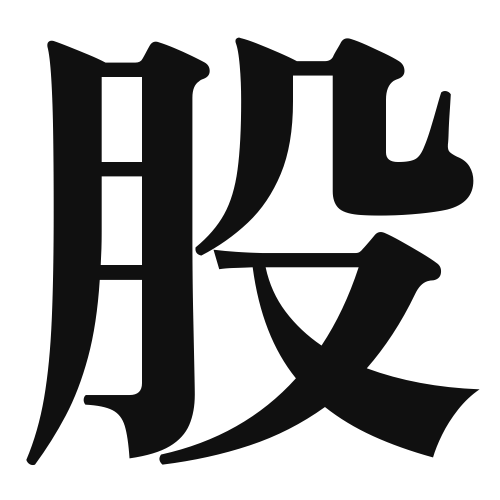1. Overview of Meaning
The kanji “股” (pronounced “mota” in Japanese) primarily means “thigh” or “groin.” It refers to the area of the body where the legs meet the torso, and it can also imply a connection or joint between two parts.
2. Formation and Radical
Formation of the Kanji: The kanji “股” is a phonetic compound (形声文字) that combines a semantic component and a phonetic component. The left side, “月,” often relates to body parts, while the right side, “古,” provides the phonetic sound.
Radical: The radical for “股” is “月,” which is commonly associated with body parts in various kanji.
3. Examples of Usage
Common Words and Phrases: Some frequently used words that include “股” are:
- 股関節 (こかんせつ, kokansetsu) – hip joint
- 股下 (またした, matashita) – inseam
Example Sentences in Daily Conversation:
- 「私は股関節が痛いです。」(Watashi wa kokansetsu ga itai desu.) – “My hip joint hurts.”
- 「このズボンの股下は短すぎる。」(Kono zubon no matashita wa tansugiru.) – “The inseam of these pants is too short.”
4. Synonyms and Antonyms
Similar Kanji: A similar kanji is “腿” (もも, momo), which specifically means “thigh.” While both refer to parts of the leg, “股” has a broader meaning that includes the groin area.
Antonyms: An antonym could be “頭” (あたま, atama), meaning “head,” as it refers to the opposite end of the body.
5. Cultural and Historical Background
Relation to Japanese Culture: The kanji “股” is often used in traditional Japanese medicine and martial arts, where understanding body mechanics is essential.
Proverbs and Idioms: There are not many specific proverbs that include “股,” but it is often referenced in discussions about physical health and movement, emphasizing the importance of the body’s joints and flexibility.
